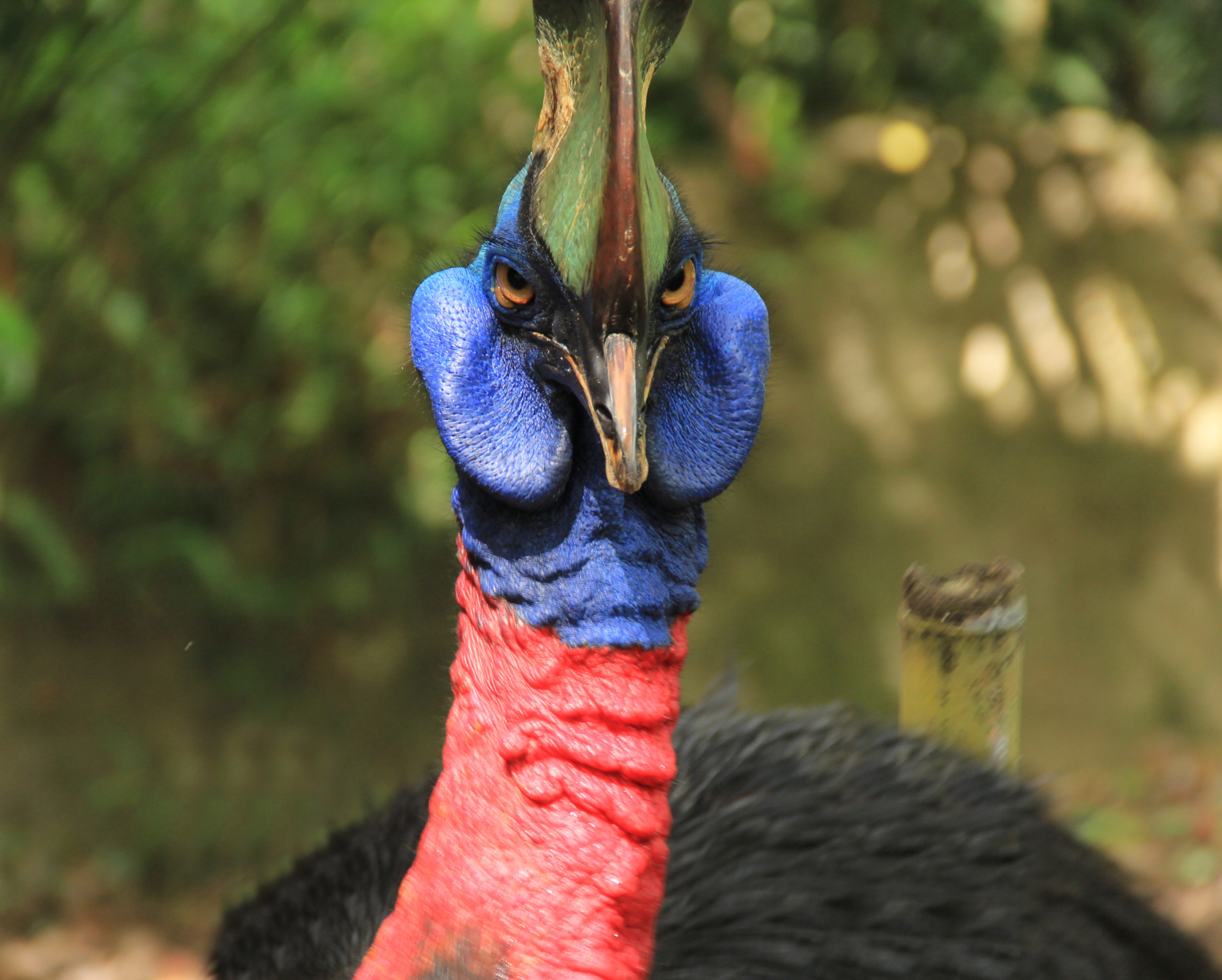Cassowary is one of two bird genera in the Casuariidae tribe. These birds are usually predators in deep forests, adept at disappearing long before humans even know they’re there. They have large bodies, long necks, are a type of flightless bird that can be recognized by their casque / helmet.
Habitat
Cassowaries live almost exclusively in New Guinea, a handful of isolated Indonesian islands. Other islands include Yapen, East Southeast, and the Maluku Islands, as well as a small part of Queensland in northeastern Australia.

Cassowaries live in tropical rain forests, melaleuca (paperbark) swamps, mangroves and can even be found foraging along the coast. They require a variety of habitats to ensure the availability of fleshy fruit all year round.
Characteristics
Females are larger and brighter colored. Adult cassowaries are 1.5 – 1.8 m tall, although some females reach 2 m, and weigh 58.5 kg. In the wild cassowaries have live span for 40 to 50 years. Cassowaries produce 3-8 large eggs after the breeding season, with an incubation period of 50-52 days!
All cassowaries have plumage consisting of loose shafts and barbules. They do not have retrices or preen glands. All species have keratin-covered shells on their heads that grow with age. Cassowaries have small wings and feet which have three fingers with sharp claws that can be used as weapons.

Cassowary Diet
The cassowary is a solitary bird except during courtship, egg laying, and occasionally around an adequate food supply. Most of these birds are frugivorous, but opportunistically omnivorous when small prey is available.
Apart from fruits, their diet includes flowers, mushrooms, snails, insects, frogs, birds, fish, rats, mice and carrion. These birds are a keystone species of the rainforest as they eat the fallen fruit whole and distribute the seeds onto the forest floor via faeces.
Although on Least Concern status according to IUCN Red List, we still must preserve this birds in the wild. So, Bali Safari Park take steps to maintain its population through conservation. It is time to learn about birds, animals and get involved in animal walfere with Bali Safari Park!






